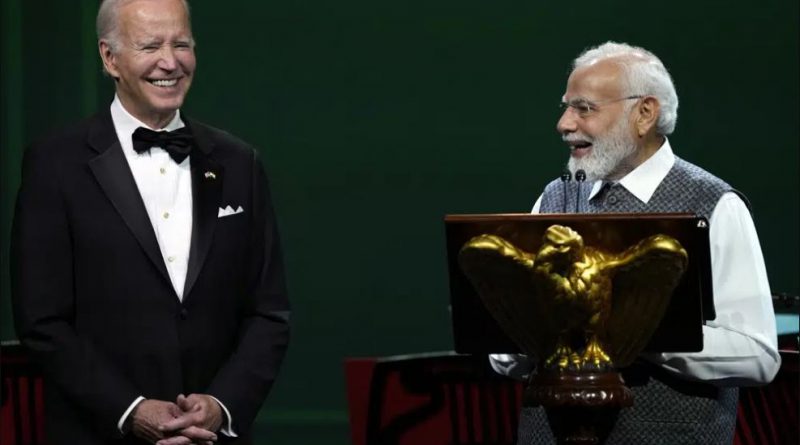Ambitious plans for US-India technology sharing face hurdles
Washington (Reuters) – The United States unveiled agreements this week to sell weapons to India and share with it sensitive military technology, a clear sign of the Biden administration’s desire to deepen ties with New Delhi to counter China’s ambitions in Asia.
But those plans, announced on Thursday during a state visit by Indian Prime Minister Narendra Modi, and future defense cooperation face significant challenges from the U.S. government’s own weapons export rules.
The Biden administration says sweeping agreements on semiconductors, critical minerals, technology, space and defense cooperation and sales will ring in a new era in relations.
They include what one official called a “trailblazing” deal to allow General Electric Co (GE.N) to produce jet engines in India to power Indian military aircraft and a plan for India to procure U.S.-made General Atomics armed MQ-9B SeaGuardian drones.
Standing in the way are strict U.S. rules governing export of defense technology, including International Traffic in Arms Regulations (ITAR).
These make defense cooperation hard even with long-time U.S. allies Britain and Australia in the AUKUS deal signed earlier this year to supply the latter with nuclear-powered submarines.
Ely Ratner, assistant secretary of defense for Indo-Pacific affairs, has stressed the need to break down barriers to technology sharing with allies and partners, including India.
“Frankly, for the United States and regional security as well … it can’t be business as usual anymore,” he told a June 8 event at the Center for a New American Security think tank.
Uphill Battle For Tech Sharing
On Thursday, the co-chairs of the U.S. Senate India Caucus, Democrat Mark Warner and Republican John Cornyn, introduced legislation that would streamline defense sales to India, including by halving the time that Congress has to block any arms sale to the country to 15 days.
But one congressional aide said efforts to speed technology sharing with India would face “an uphill battle” both in the U.S. Congress and at the U.S. State Department, where officials have a specific obligation to protect U.S. technology.
“There are concerns about (technology sharing) in the Australia context and there would be more concerns in the India context,” he said. “Australia is an ally. India wants the same privileges that allies get without having any of the same obligations or responsibilities.”
The source noted that India wanted access to sensitive technologies that many of the closest U.S. allies do not have, even while sticking to its stance of maintaining close relations with Russia and refusing to condemn Moscow’s Ukraine invasion.
Bill Greenwalt, a former senior Pentagon official for industrial policy, said approvals for the jet engine deal and for the military drones should be relatively straightforward, although it appeared GE was still in the process of getting export authorization, which would come with State Department-mandated restrictions.
“Complicating factors include to what degree congressional review and approval thresholds kick in. I expect that likely will happen for the SeaGuardians,” said Greenwalt, adding that the U.S. Missile Technology Control Regime was an added likely complication.
Limits On Technology Use
And there is another factor: how willingly India will accept the restrictions that may come along with any technology it receives from the U.S.
Greenwalt said the conditions ITAR attaches to use of technology and the limits it imposes on India’s ability to add its own intellectual property to what it learns from that could mean New Delhi “quickly grows tired of being dictated to by the U.S. State Department.”
He added that given India’s growing IT expertise, it had the potential to leapfrog the United States in areas such as integrated command and control, sensor fusion, autonomy, and data analytics.
“Together we could likely make a lot more progress than if we pursue separate paths, but ITAR disincentives will keep them from cooperating with us on things that matter while our over-confidence will keep us from seeing their potential,” said Greenwalt.
Rick Rossow, an India expert at Washington’s Center for Strategic and International Studies, said approval processes for advanced defense technology transfer were “onerous but not impossible.”
“The U.S. — with great effort — can move faster for India,” he said. “But we need India’s deal-making process to move fast, too. Otherwise, potential deals will not be accelerated on our side.”



